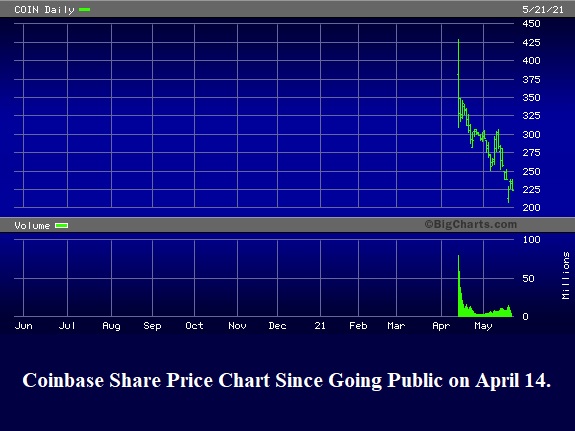Courtesy of Pam Martens
By Pam Martens and Russ Martens
The House Financial Services’ Subcommittee on Investor Protection, Entrepreneurship and Capital Markets will hold a hearing today on the grossly disfigured initial public offering (IPO) process in the U.S. today, which is allowing the rich to get richer as the small retail investor is being effectively looted. The hearing is titled: “Going Public: SPACs, Direct Listings, Public Offerings, and the Need for Investor Protections.”
Coinbase, the cryptocurrency exchange, went public on Nasdaq via a direct listing on April 14. On its first day of trading it closed at a share price of $328.28, giving it a market capitalization of $85.8 billion. In a traditional IPO, early investors and company executives are not allowed to sell their shares for several months due to a so-called lockup period. There’s no such prohibition in a direct listing. According to an SEC filing, Coinbase’s Chairman and CEO, Brian Armstrong, sold 750,000 shares on April 14 at an average share price of $389.10, raising approximately $291,825,000. Since then, Coinbase has been on a steady descent, closing this past Friday at $224.35, a decline of 32 percent in less than two months.
The month prior to Coinbase going public, the Commodity Futures Trading Commission, a federal regulator, levied a paltry $6.5 million fine against Coinbase for the following outrageously manipulative conduct spanning more than three years:
“According to the order, between January 2015 and September 2018, Coinbase recklessly delivered false, misleading, or inaccurate reports concerning transactions in digital assets, including Bitcoin, on the GDAX electronic trading platform it operated. During this period, Coinbase operated two automated trading programs, Hedger and Replicator, which generated orders that at times matched with one another. The GDAX Trading Rules specifically disclosed that Coinbase was trading on GDAX, but failed to disclose that Coinbase was operating more than one trading program and trading through multiple accounts.
…




